Argonne’s Advanced Photon Source helped scientists develop a new technique for detecting and predicting defects in 3D printed metals.
Tag: Advanced Photon Source (APS)
Investigating battery failure to engineer better batteries
Researchers use cutting-edge X-ray techniques to observe how an operating solid-state battery degrades.
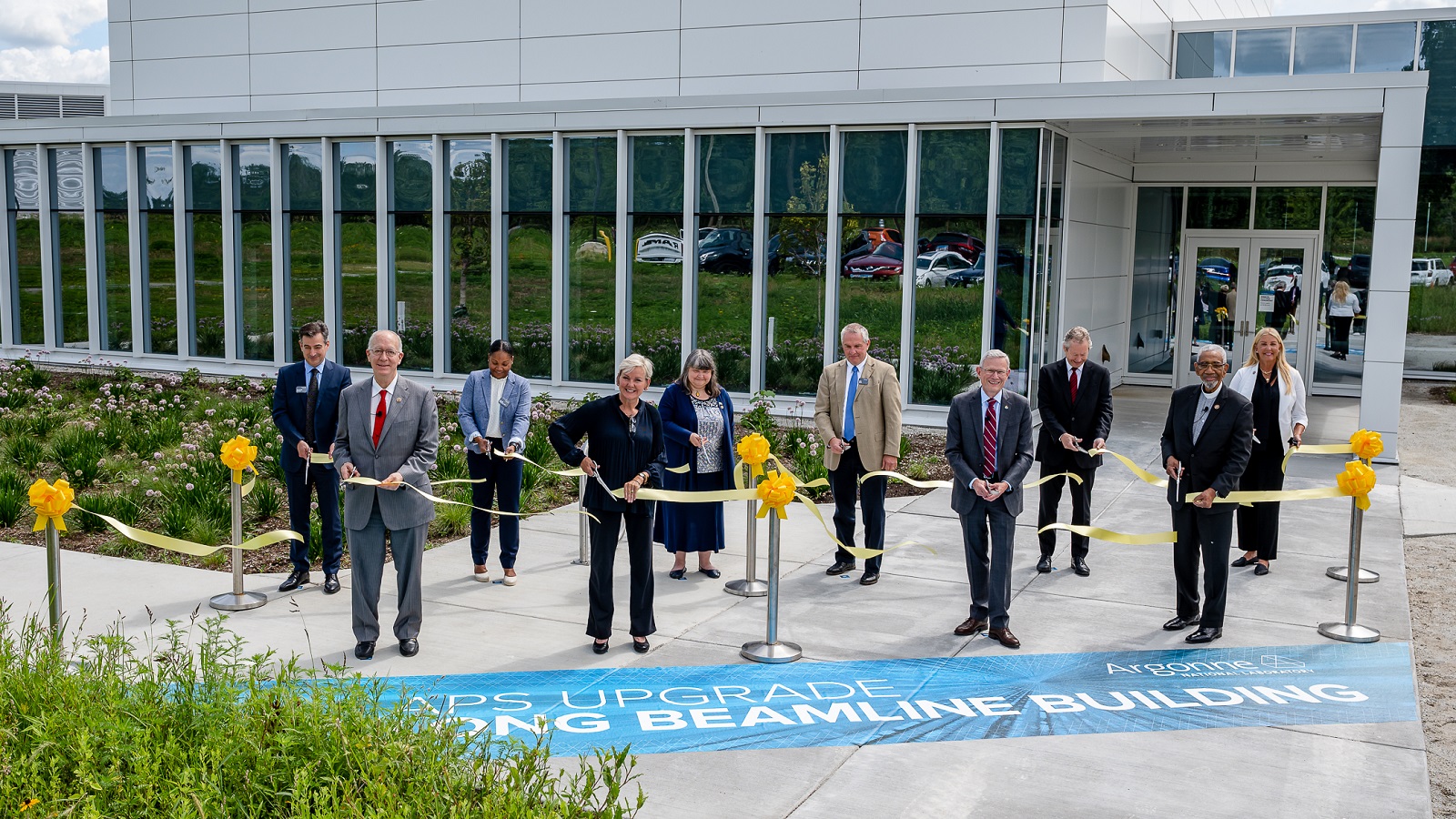
Ribbon-cutting ceremony spotlights the Advanced Photon Source’s game-changing long beamlines
The technology housed in the new Long Beamline Building will lead to more efficient solar cells, longer-lasting batteries, more durable materials for airplanes and much more.
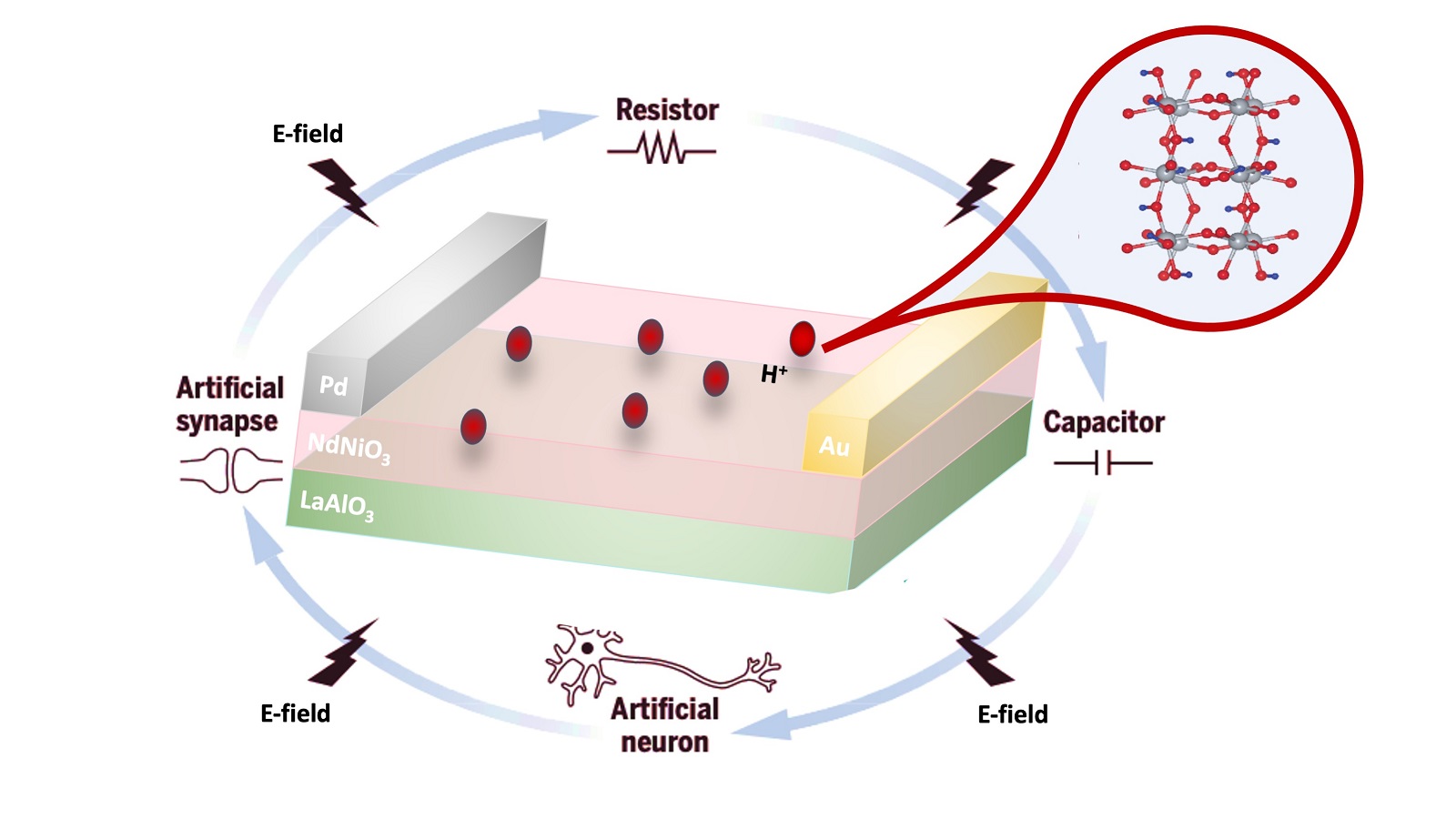
Computer hardware mimics brain functions
A multi-institutional team, including Argonne National Laboratory, has developed a material with which computer chips can be designed to reconfigure their circuits when presented with new information. It does so by mimicking functions in the human brain.
Advanced Photon Source helps Pfizer create COVID-19 antiviral treatment
The new drug candidate, Paxlovid, significantly reduced hospitalization and death in adult patients, according to Pfizer, and will be submitted for an emergency use authorization in the United States. Data was taken at IMCA-CAT at the APS.
Pivotal discovery of nanomaterial for LEDs
Perovskite nanocrystals have been prime candidates as a new material for LEDs but have proved unstable on testing. Scientists have discovered a method for stabilizing them, which have applications for consumer electronics, detectors and medical imaging.
Let’s get small: New Argonne method greatly improves X-ray nanotomography resolution
Using X-rays to study batteries and electronics at nanometer scales requires extremely high resolution. Argonne scientists led an effort to build a new instrument and devise a new algorithm to greatly improve the resolution for nanotomography.
Now in 3D: Deep learning techniques help visualize X-ray data in three dimensions
A team of Argonne scientists has leveraged artificial intelligence to train computers to keep up with the massive amounts of X-ray data taken at the Advanced Photon Source.
Scientists repurpose cancer and seizure medications to aid in the fight against COVID-19
Two teams of researchers using the Advanced Photon Source identified existing drugs — one used to treat cancer, the other an anti-seizure medication — that may work as treatments for COVID-19.
A biological fireworks show 300 million years in the making
Scientists using the Advanced Photon Source have determined that amphibian eggs release showers of zinc upon fertilization, just like mammalian eggs. This research could have implications for human fertility studies.
DOE names six Argonne scientists to receive Early Career Research Program awards
Six Argonne scientists receive Department of Energy’s Early Career Research Program Awards.
Unveiling what governs crystal growth
Crystals are wonders of nature and science with important applications in electronics and optics. Scientists from Argonne have new insights into how gallium nitride crystals grow. Gallium nitride crystals are in wide use in light-emitting diodes (LEDs) and may form transistors for high-power switching electronics to make electric grids more energy efficient and smarter.
Liquid-like motion in crystals could explain their promising behavior in solar cells
Scientists studied the inner workings of a solar cell material using X-ray and neutron scattering. The study revealed that liquid-like motion in the material may be responsible for their high efficiency in producing electric currents from solar energy.
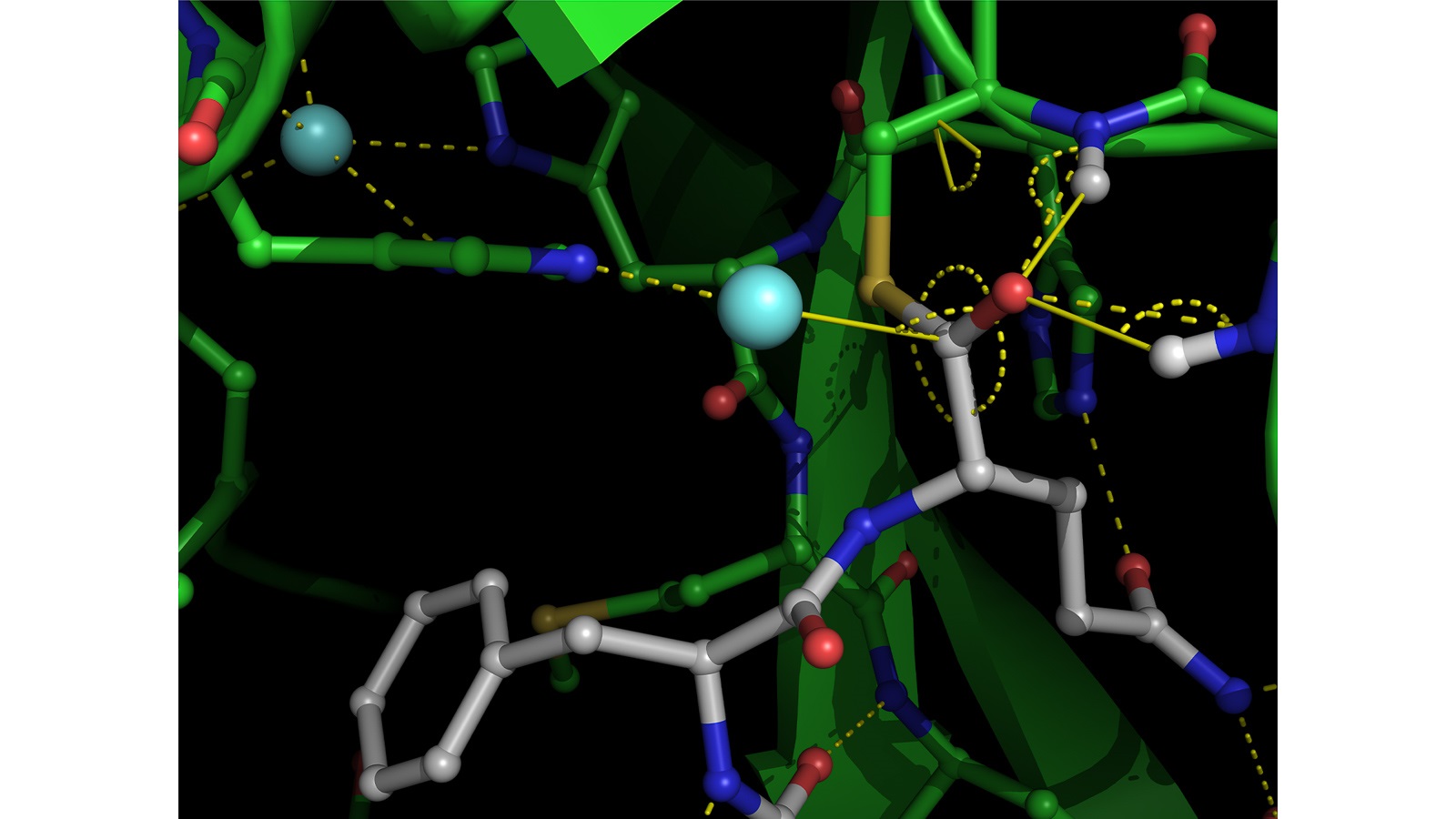
Caught in the act: New data about COVID-19 virus’s functions could aid in treatment designs
For the first time, a team of researchers has captured X-ray images of a critical enzyme of the COVID-19 virus performing its function. This discovery could improve design of new treatments against the disease.
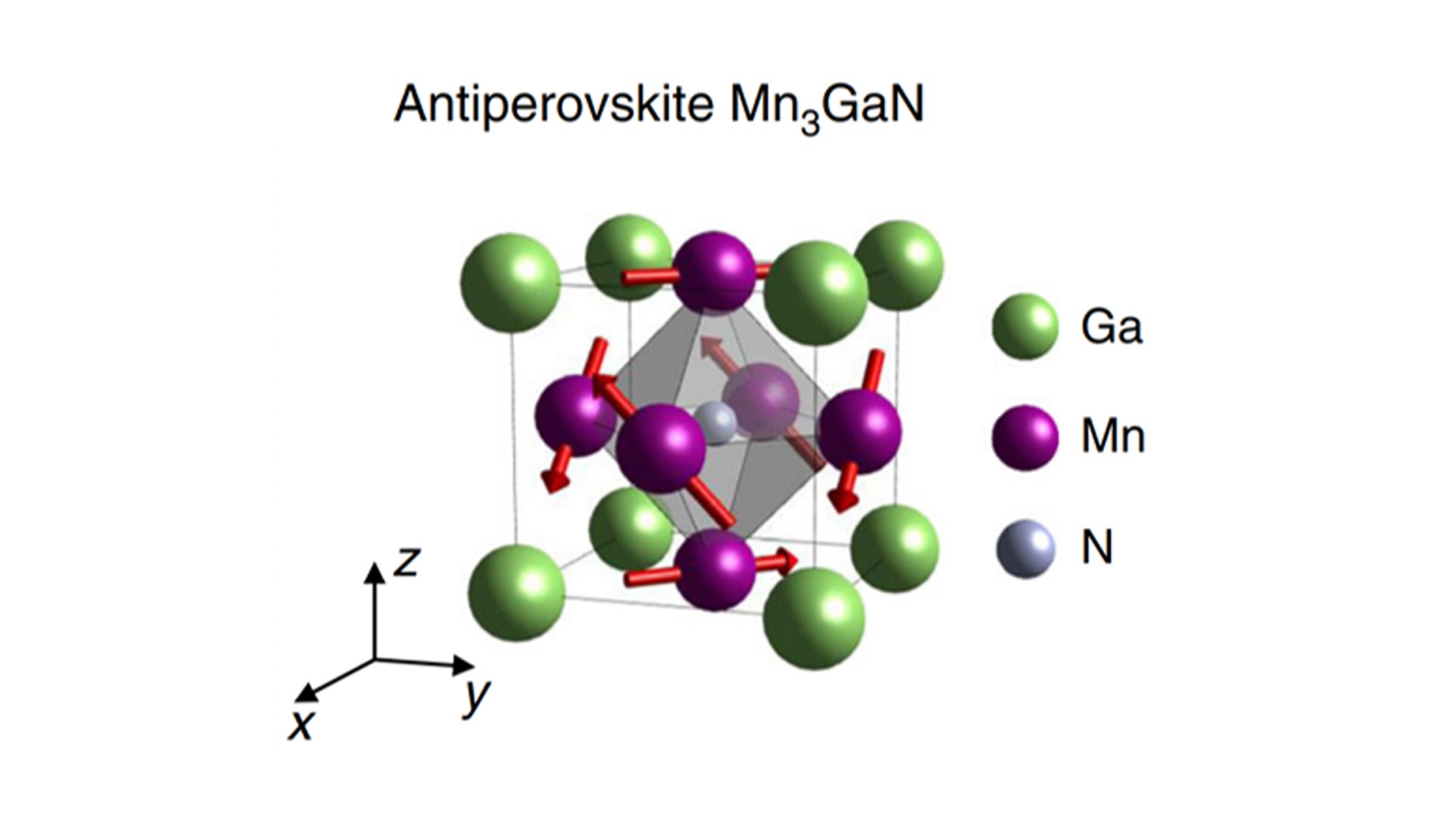
A new spin on energy-efficient electronics
Researchers are harnessing the power of Argonne’s Advanced Photon Source to test new materials for use in spintronics. This emerging field uses electron spin instead of charge, allowing manufacturers to make smaller and more efficient electronic devices.

Research plumbs the molecular building blocks for light-responsive materials
This project at Argonne National Laboratory is focused on better understanding light-responsive organic materials for a future with flexible, highly efficient photovoltaics and cutting-edge optical tools.
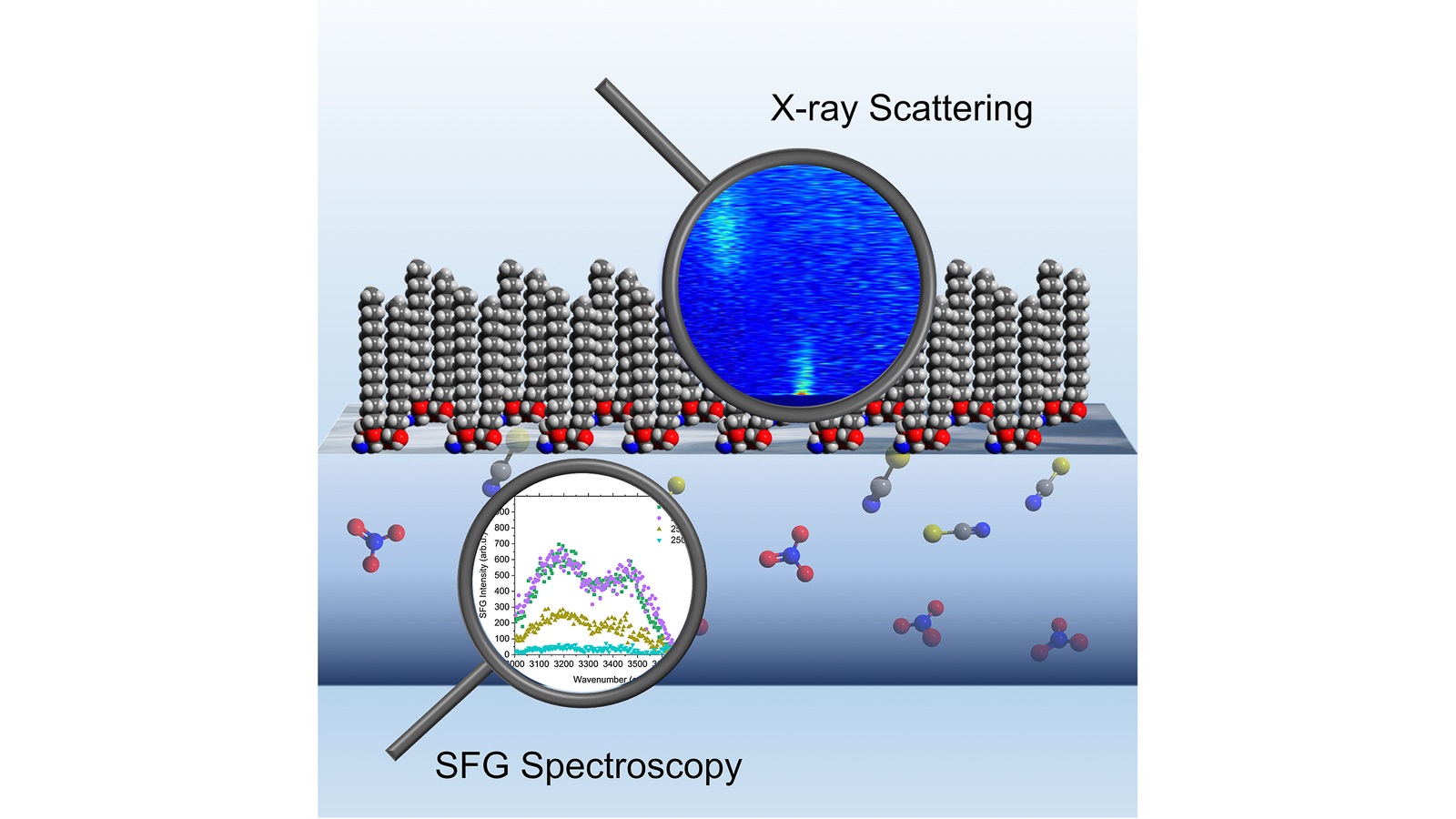
Scientists gain insight into recycling processes for nuclear and electronic waste
Scientists investigate a process that recycles nuclear and electronic waste materials to extend their lifetime and reduce expensive and invasive mining.
Sneak preview: New platform allows scientists to explore research environments virtually
The Department of Energy pledged $1.68 million to Argonne National Laboratory over three years so it can create a virtual platform or digital twin that will allow experimentalists to explore their proposed studies prior to visiting the labs.

Argonne innovations and technology to help drive circular economy
In a collaborative effort to “recover, recycle and reuse,” Argonne strengthens research that addresses pollution, greenhouse gases and climate change and aligns with new policies for carbon emission reduction.

Tough, yet tender: Scientists firm up research on durable hydrogels
The new material, which the Advanced Photon Source helped characterize, is strong yet stretchable, and could be ideal for creating artificial tendons and ligaments for prosthetics and robotics.

Why the lovable llama might be a secret weapon against COVID-19
As the fight against COVID-19 continues, scientists have turned to an unlikely source for a potentially effective treatment: tiny antibodies naturally generated by llamas.
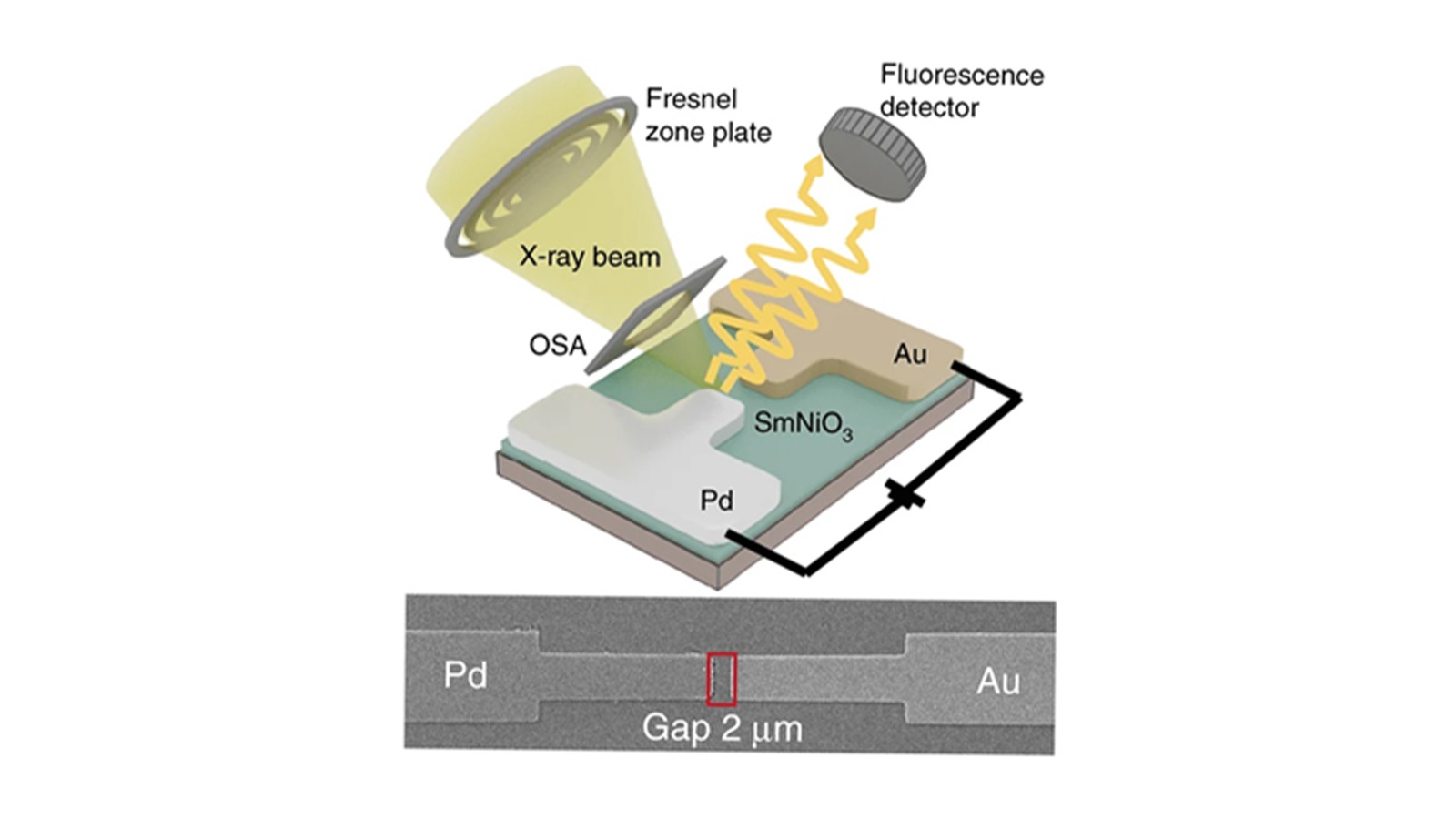
Argonne scientists help explain phenomenon in hardware that could revolutionize AI
A group of scientists from around the country, including those at Argonne National Laboratory, have discovered a way to make AI-related hardware more efficient and sustainable.

Argonne’s first Black director reflects on science, inequality and a new honor
Walter Massey, the lab’s first Black director, looks back on his time at Argonne and discusses the inequities of minorities in science in light of a new Argonne Fellowship named for him.
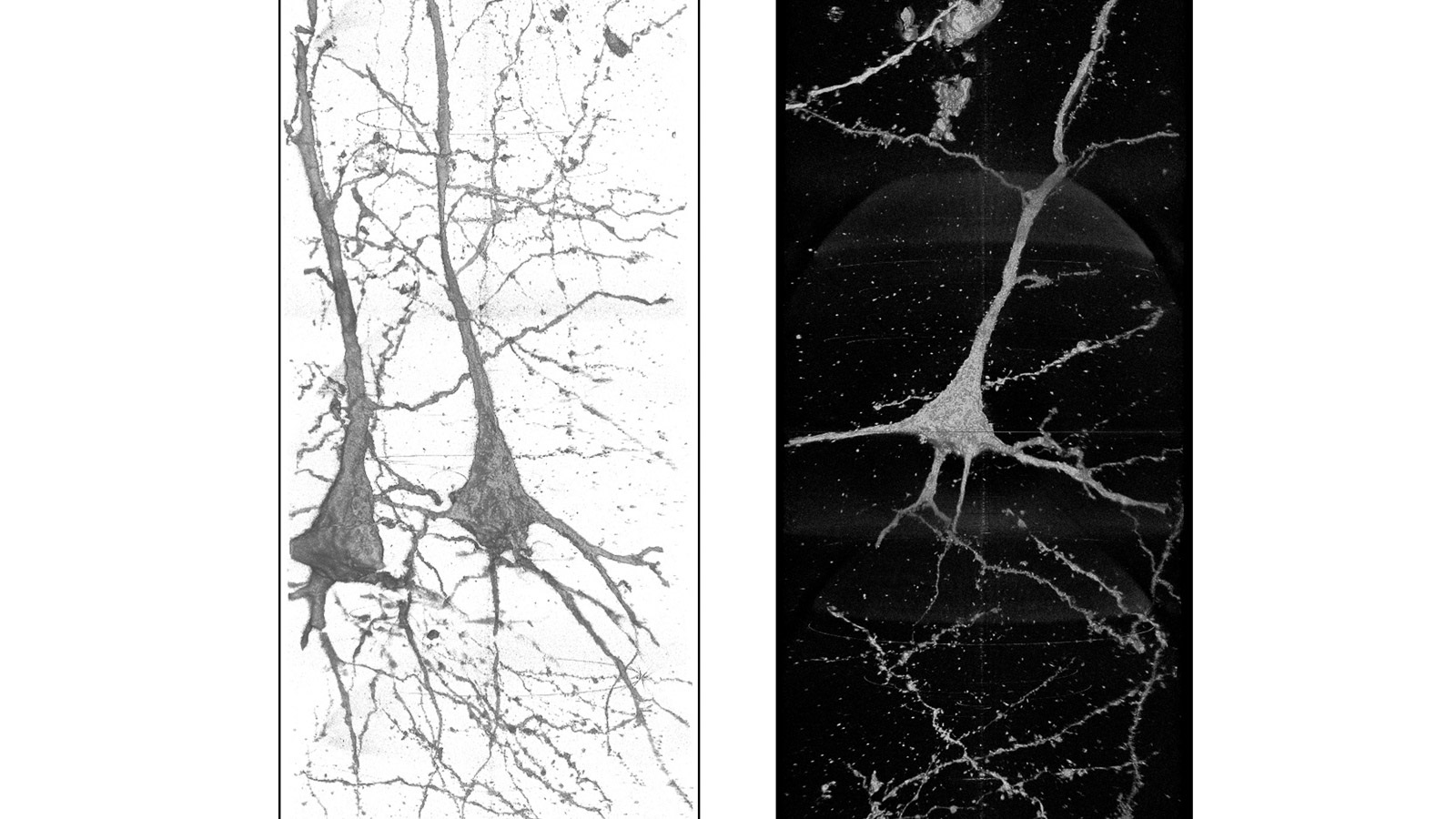
Seeing schizophrenia: X-rays shed light on neural differences, point toward treatment
An international research team used the ultrabright X-rays of the Advanced Photon Source to examine neurons in the brains of schizophrenia patients. What they learned may help neurologists treat this harmful brain disorder.

How Argonne is working to power a clean energy revolution
A growing global population will need energy from a range of sources. Scientists at Argonne National Laboratory have been pioneering solutions for 75 years.

Worth their salt: New battery anodes use salt for energy, stability
Researchers at the U.S. Department of Energy’s Argonne National Laboratory and the University of California San Diego have discovered that a material that looks geometrically similar to rock salt could be an interesting candidate for lithium battery anodes that would be used in fast charging applications.
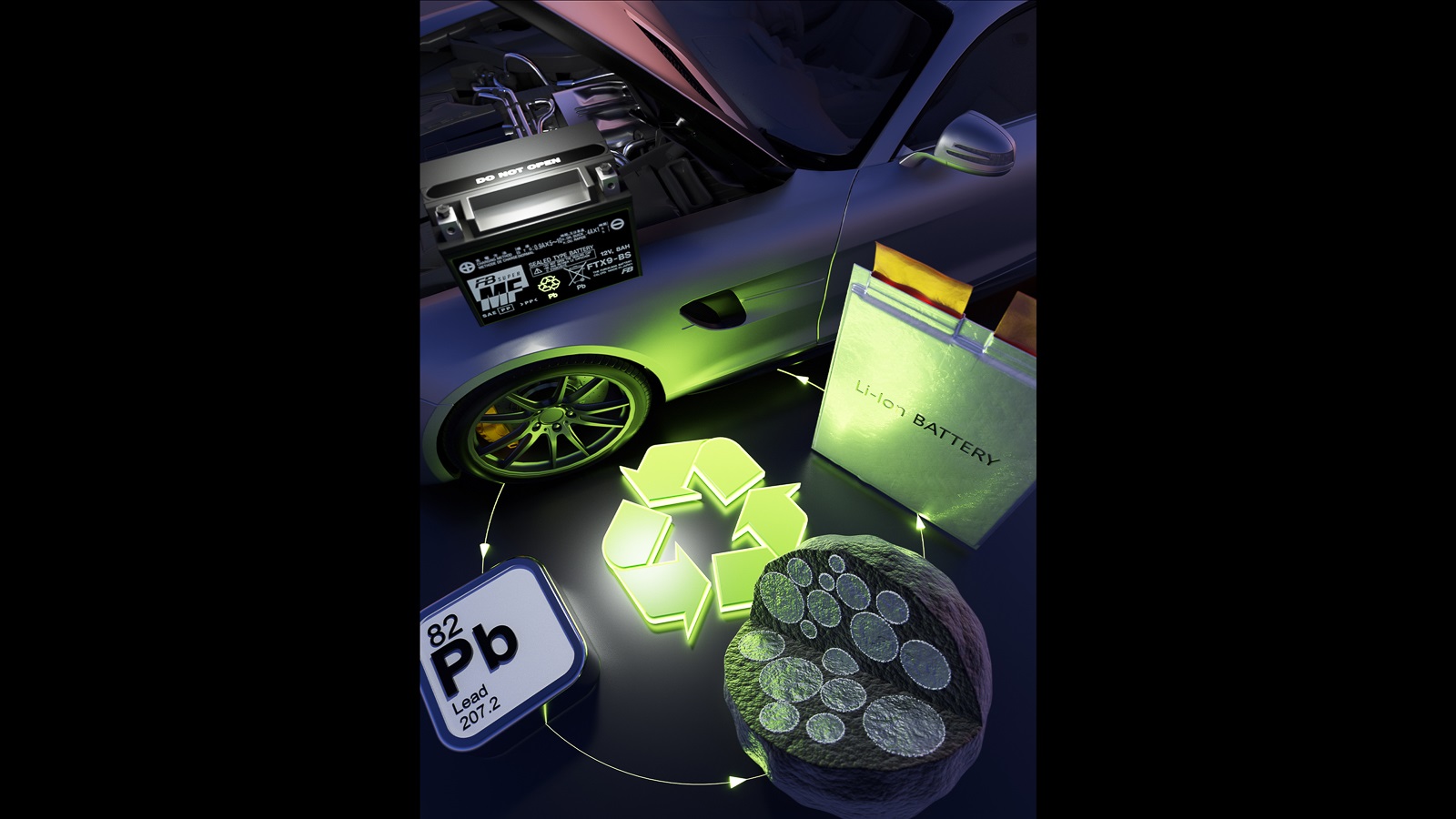
Getting the lead in
Researchers developed a low-cost, high-performance, sustainable lead-based anode for lithium-ion batteries that can power hybrid and all-electric vehicles. They also uncovered its previously unknown reaction mechanism during charge and discharge.
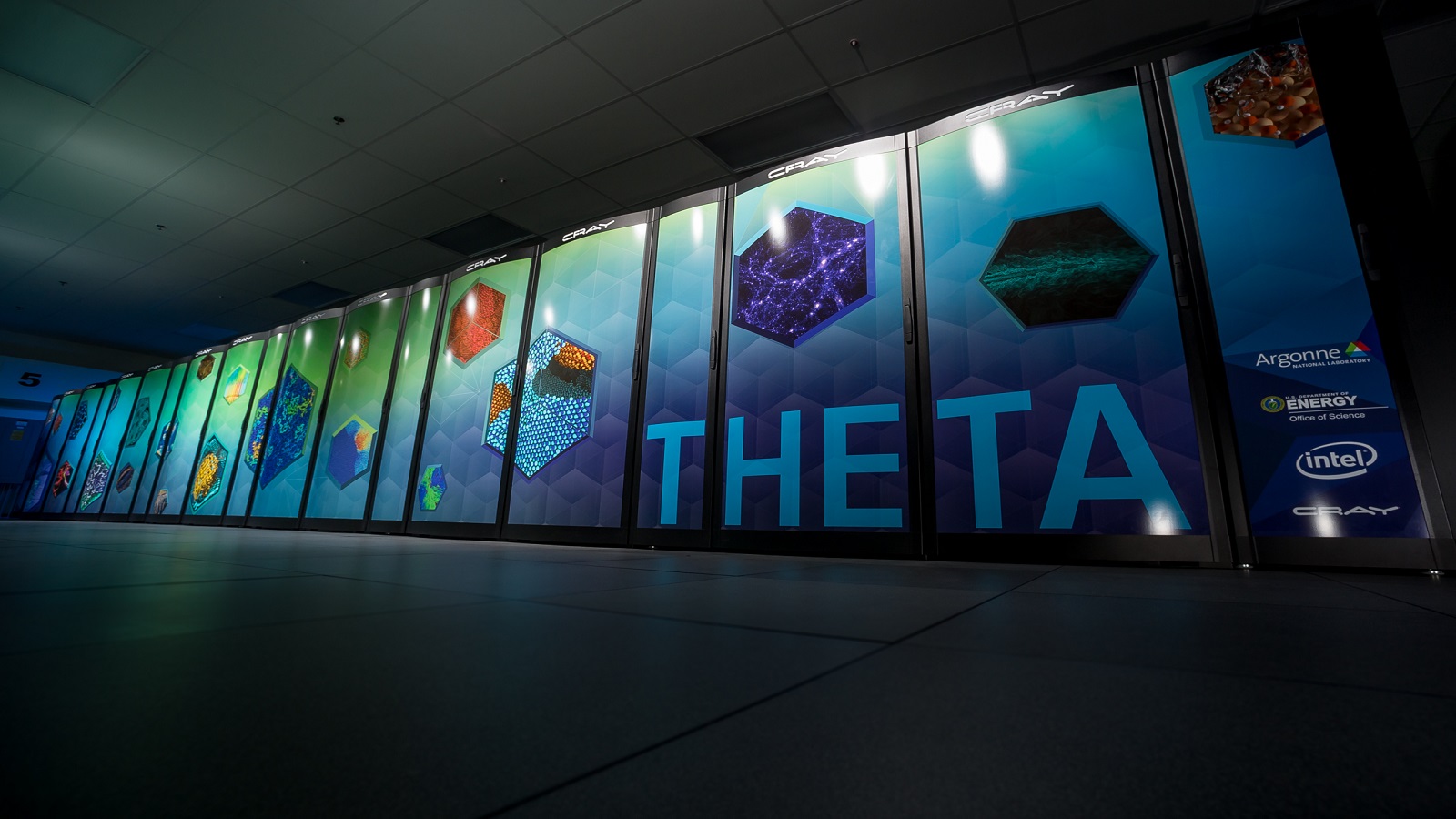
The AI-driven initiative that’s hastening the discovery of drugs to treat COVID-19
Ten organizations have created a pipeline of artificial intelligence and simulation tools to narrow the search for drug candidates that can inhibit SARS-CoV-2.
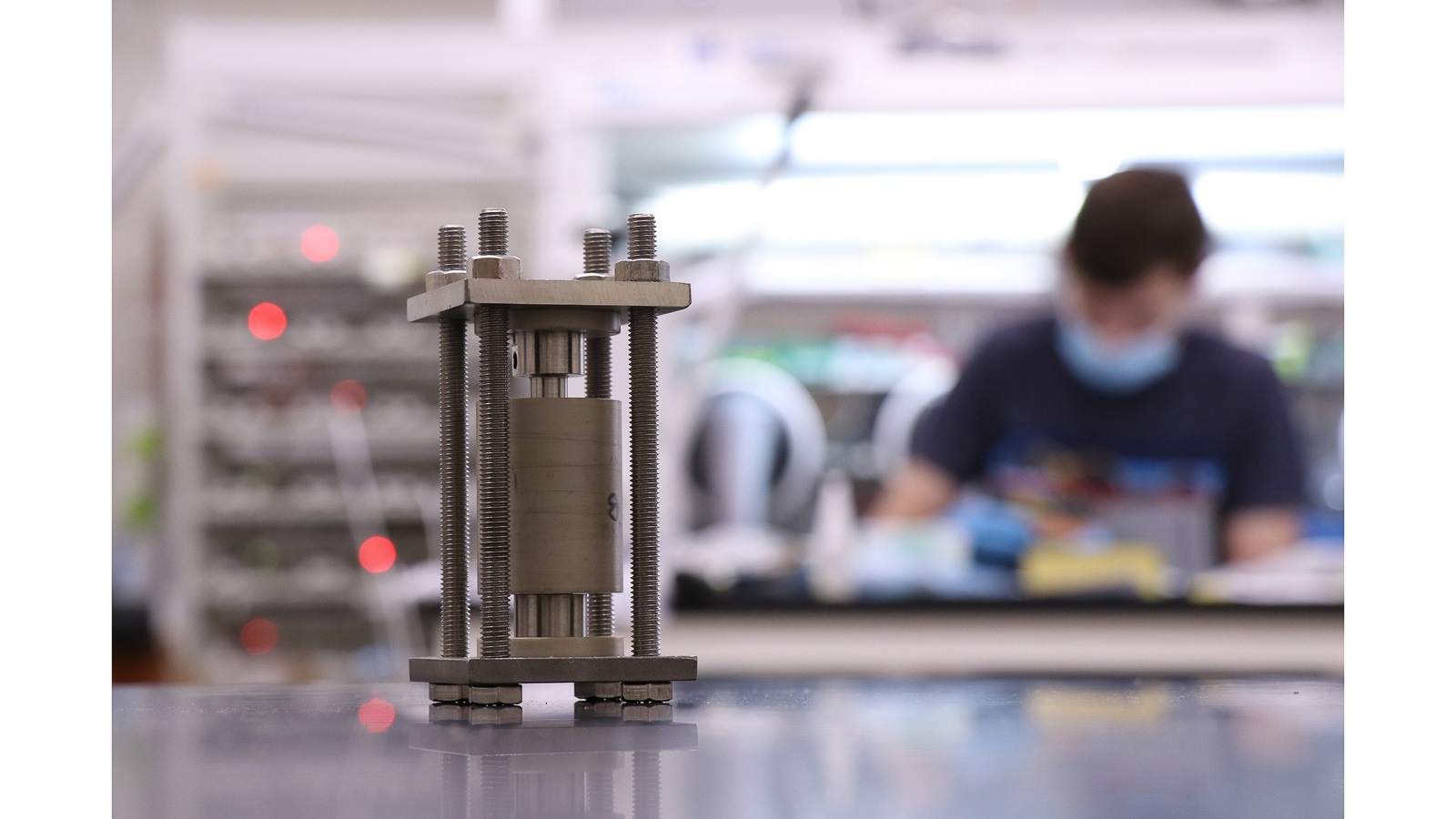
Inside the battery in 3D: Powerful X-rays watch solid state batteries charging and discharging
Using high-speed X-ray tomography, researchers captured images of solid-state batteries in operation and gained new insights that may improve their efficiency.

Latch, load and release: Advanced Photon Source helps reveal elastic motion that makes click beetles click
A new study examines the forces behind the quick energy release beetles use for propulsion and provides guidelines for studying extreme motion and energy storage and release in animals.
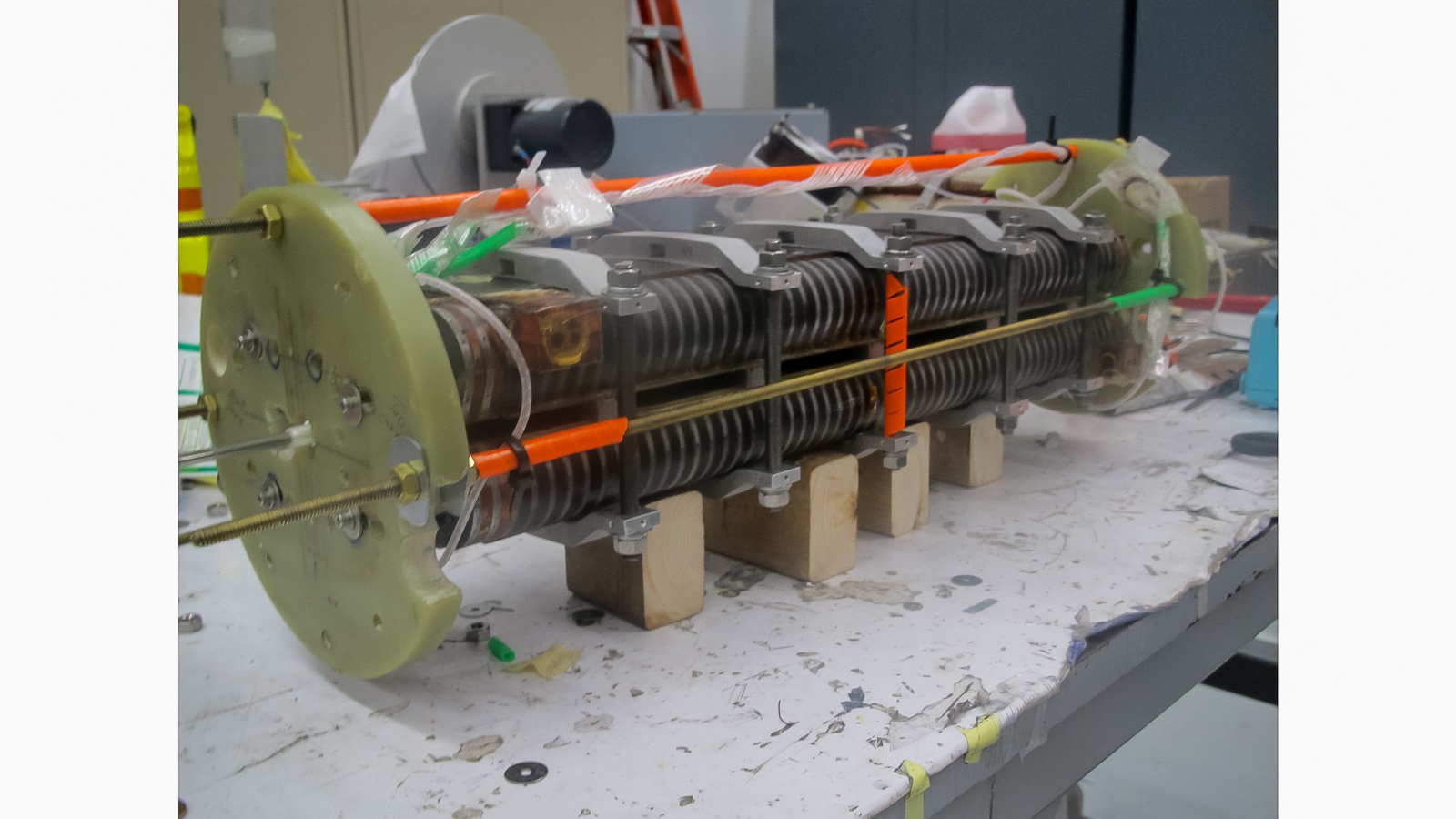
National laboratories’ magnet designers look to the future of light sources with new prototype
After more than 15 years of work, scientists at three DOE national laboratories have succeeded in creating and testing an advanced, more powerful superconducting magnet made of niobium and tin for use in the next generation of light sources.
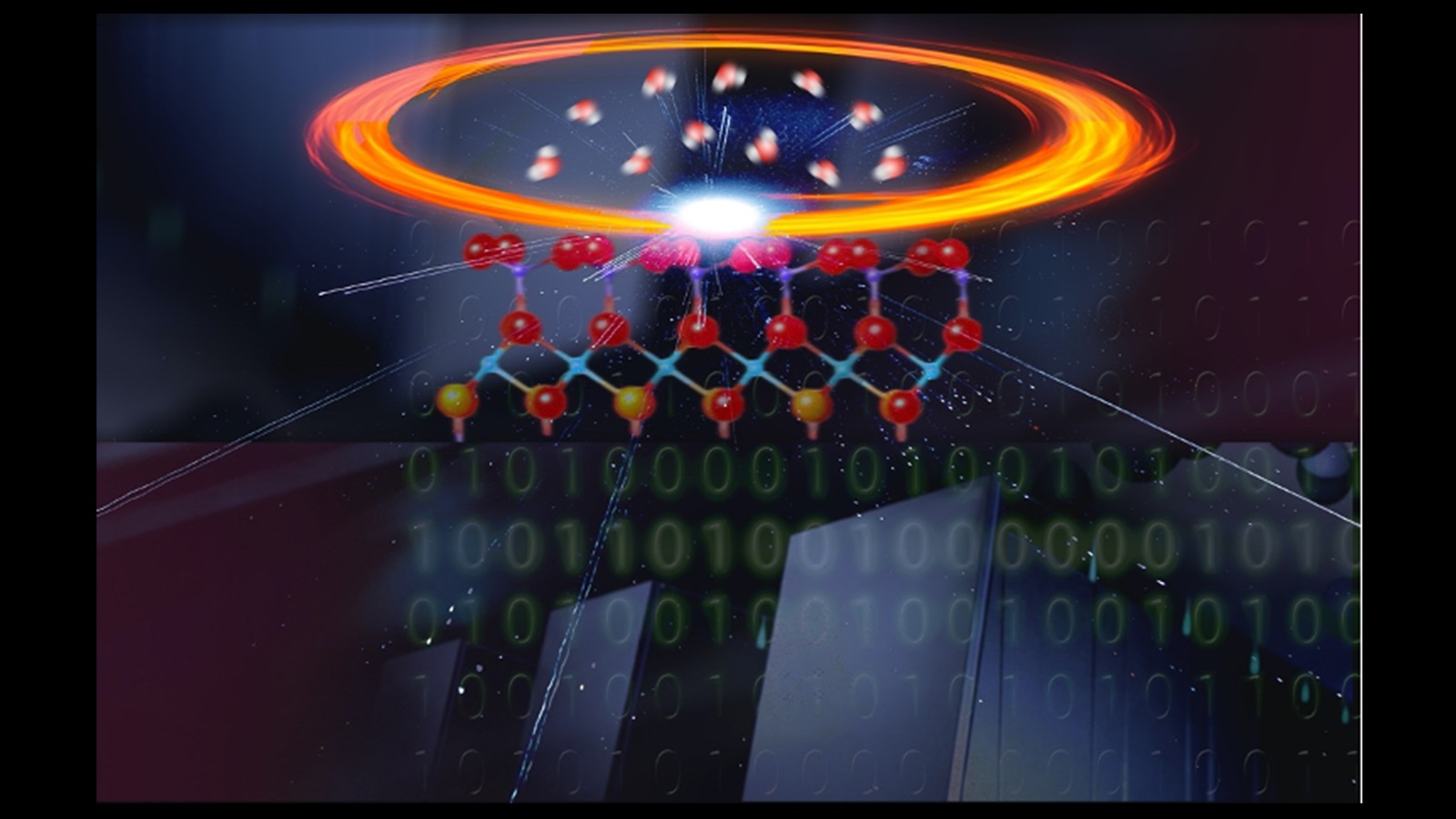
Do simulations represent the real world at the atomic scale?
A multidisciplinary research team has developed a strategy to validate computer simulations of oxide/water interfaces at the atomic scale using X-ray reflectivity experiments. Such interfaces are key in many energy applications.
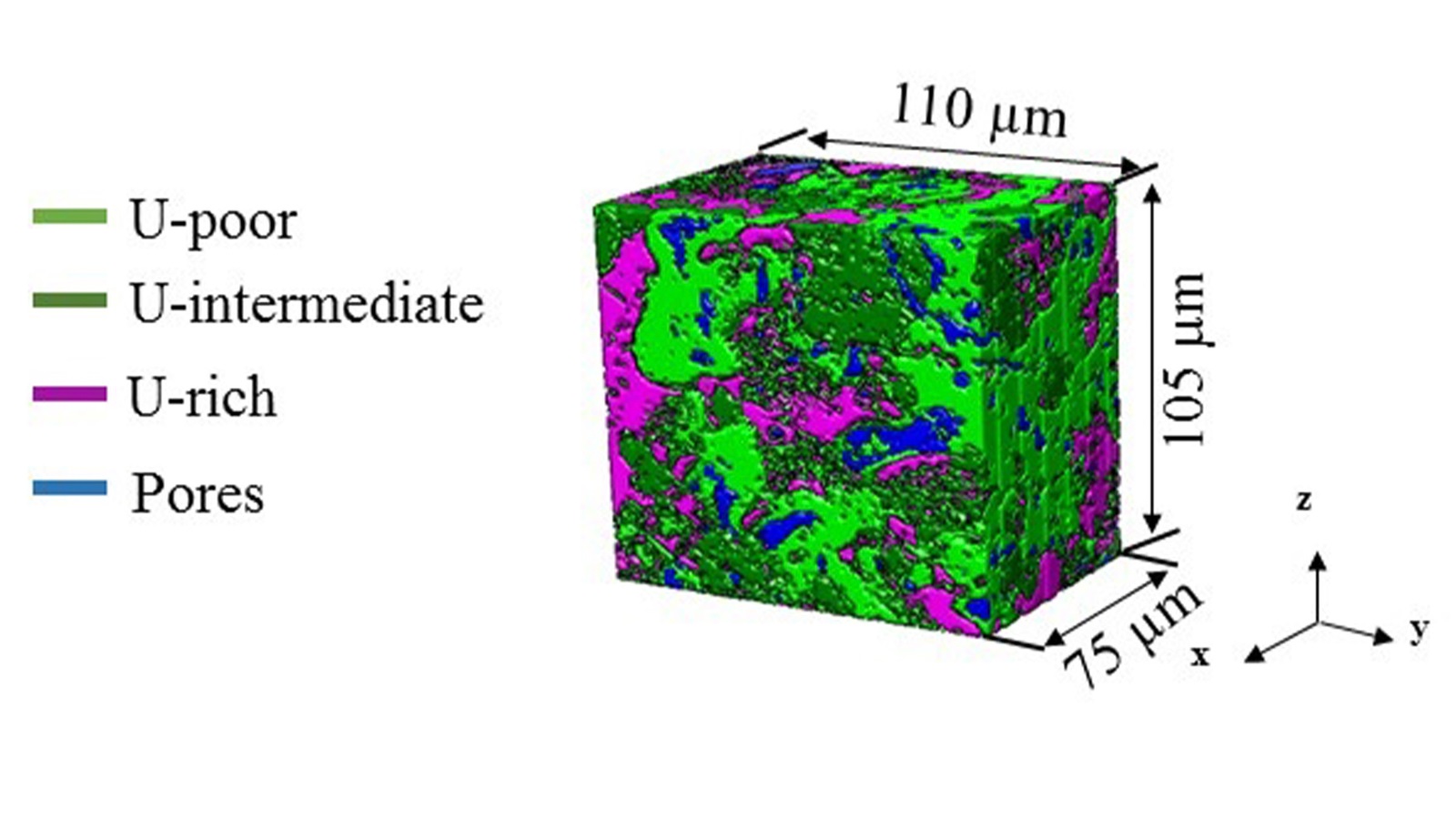
Scientists gain an unprecedented view of irradiated nuclear fuel
Researchers from Purdue University and Argonne National Laboratory have used intense X-rays to inspect irradiated nuclear fuel.
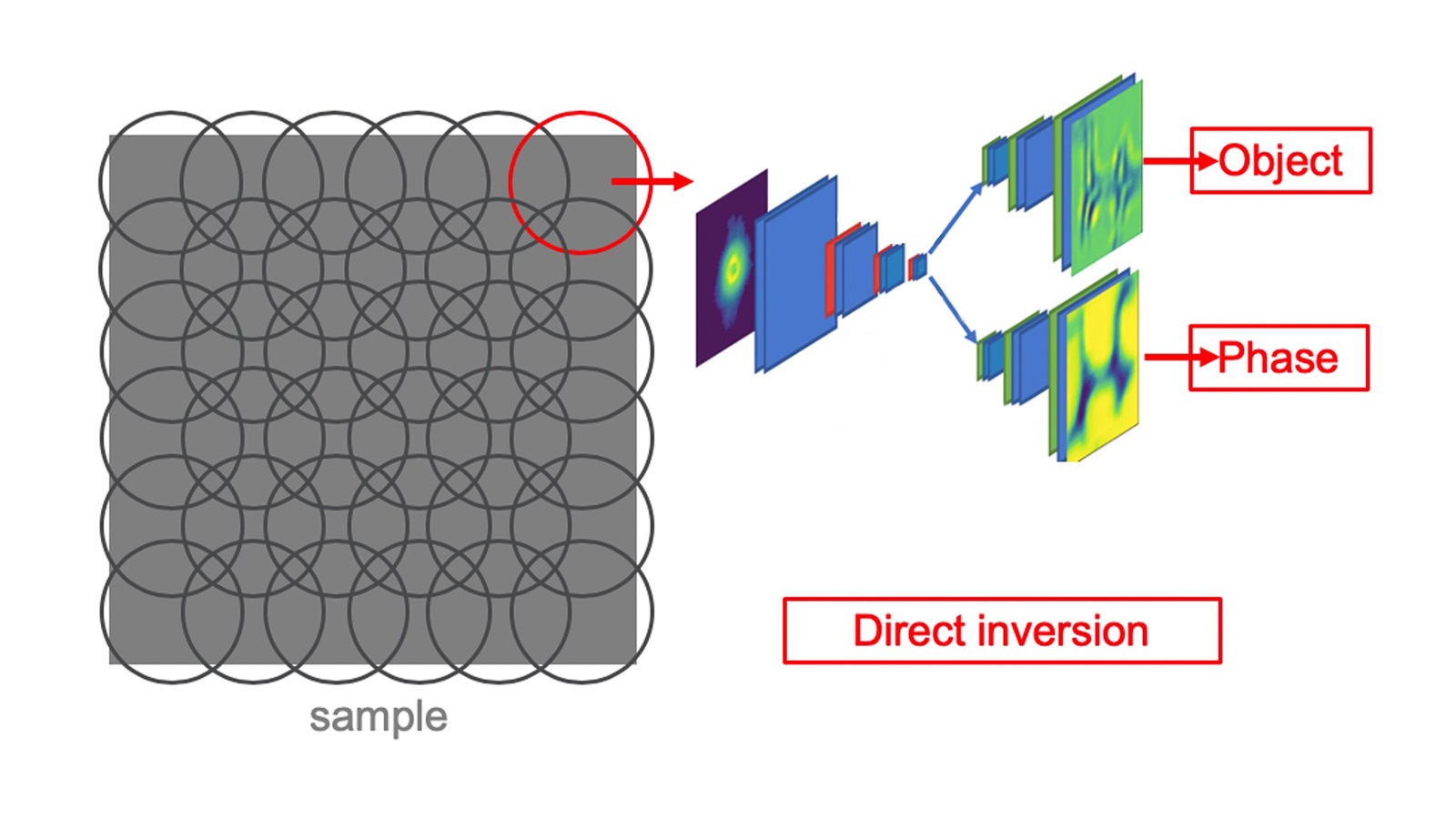
Using neural networks for faster X-ray imaging
A team of scientists from Argonne is using artificial intelligence to decode X-ray images faster, which could aid innovations in medicine, materials and energy.
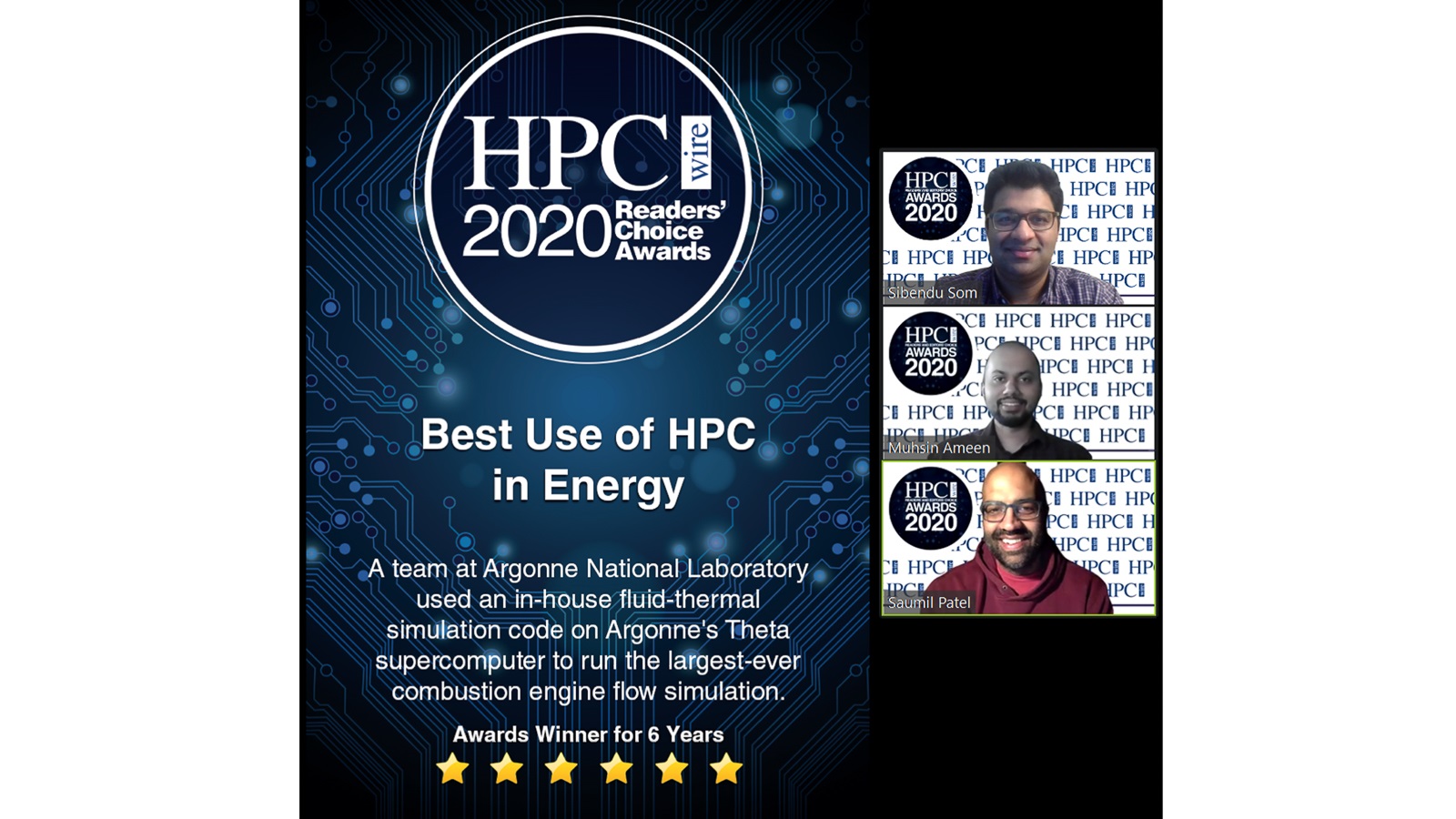
Argonne earns HPCwire awards for the best use of high performance computing in energy and industry
HPCwire magazine recognizes two Argonne teams for outstanding achievement in their use of high performance computing.
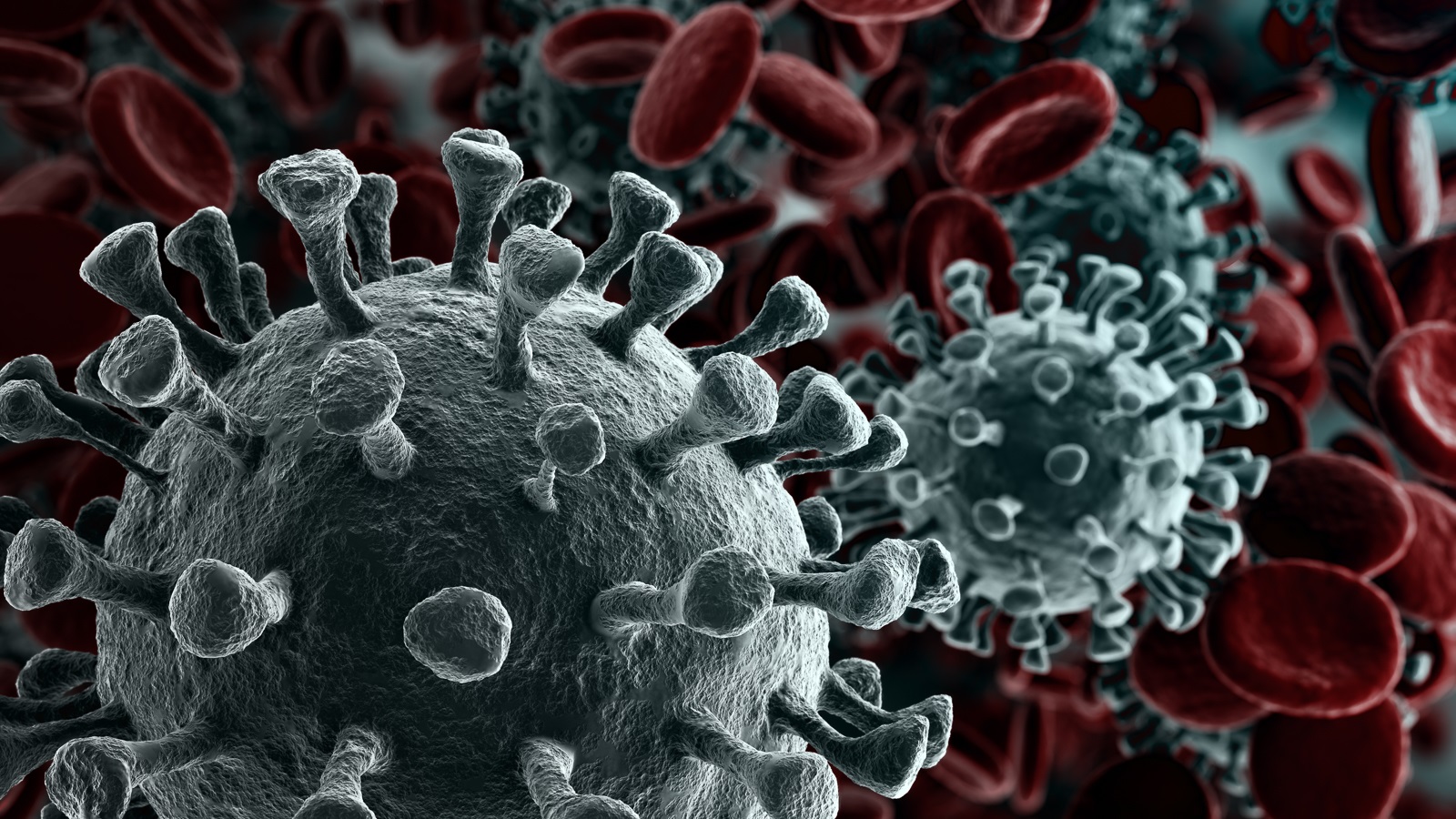
10 ways Argonne science is combatting COVID-19
Argonne scientists and research facilities have made a difference in the fight against COVID-19 in the year since the first gene sequence for the virus was published.

Beamline scientists connect the world’s researchers to the APS
Every successful experiment at the Advanced Photon Source relies on the knowledge and skills of the beamline scientists who enable the research. What makes a good beamline scientist? Four of them weigh in.

Eight ways Argonne advanced science in 2020
Throughout 2020, Argonne answered fundamental science questions and provided solutions for the world.
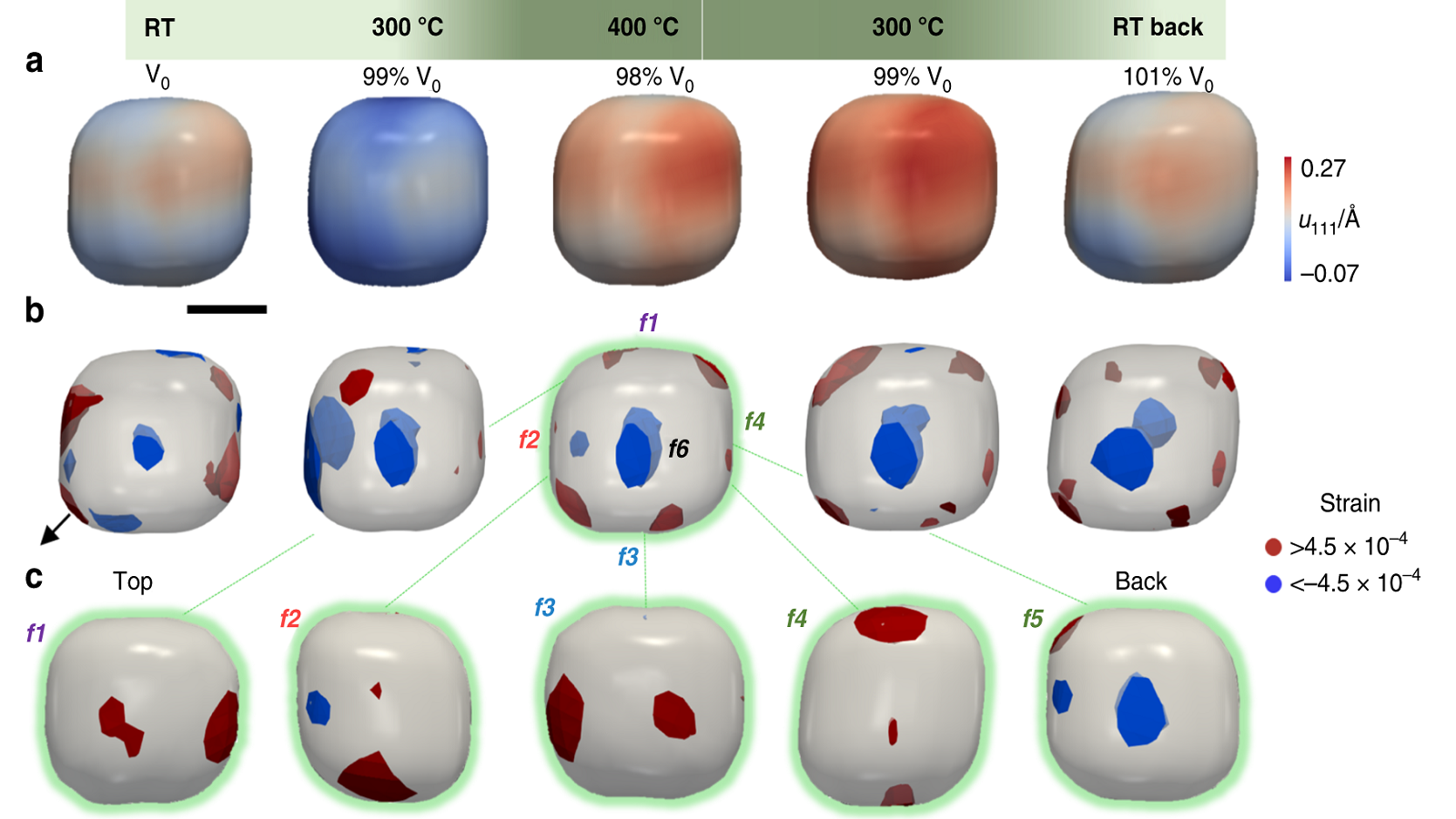
Striking gold: Advanced Photon Source enables catalysis research at small scales
By examining tiny particles of gold with powerful X-ray beams, scientists hope they can learn how to cut down on harmful carbon monoxide emissions from motor vehicles.

APS plays foundational role in development of COVID-19 vaccines
More than a decade of virus research at the APS laid the groundwork for more effective COVID-19 vaccines and helped speed their rapid development.

Q&A with Junhong Chen: Argonne’s lead water strategist addresses questions on managing our precious water resources
Argonne’s Junhong Chen discusses how Argonne’s wide-ranging expertise combined with use of artificial intelligence and world-class research facilities can solve problems in water science and engineering.
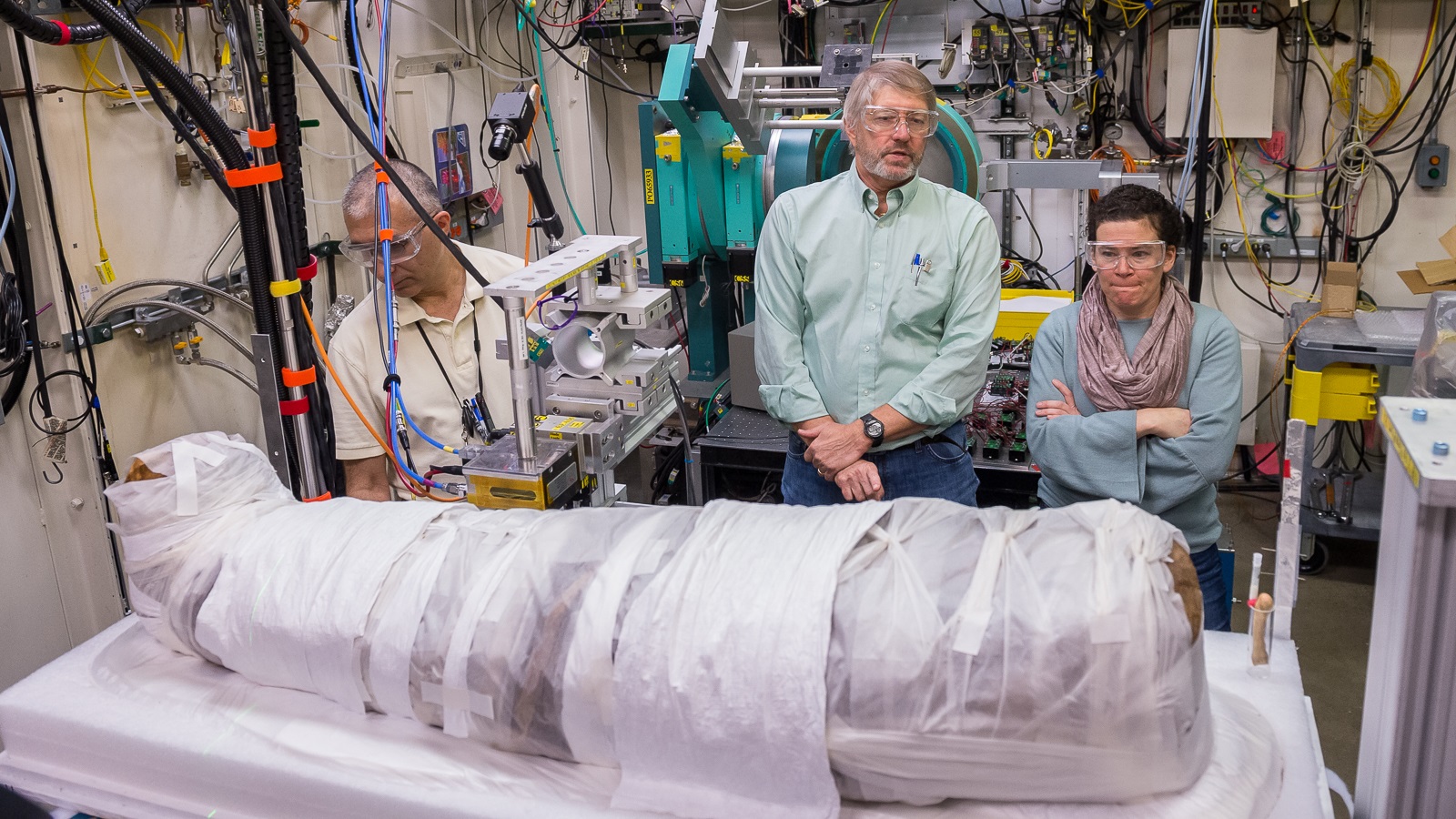
Under wraps: X-rays reveal 1,900-year-old mummy’s secrets
Researchers used the powerful X-rays of the Advanced Photon Source to see the preserved remains of an ancient Egyptian girl without disturbing the linen wrappings. The results of those tests point to a new way to study mummified specimens.
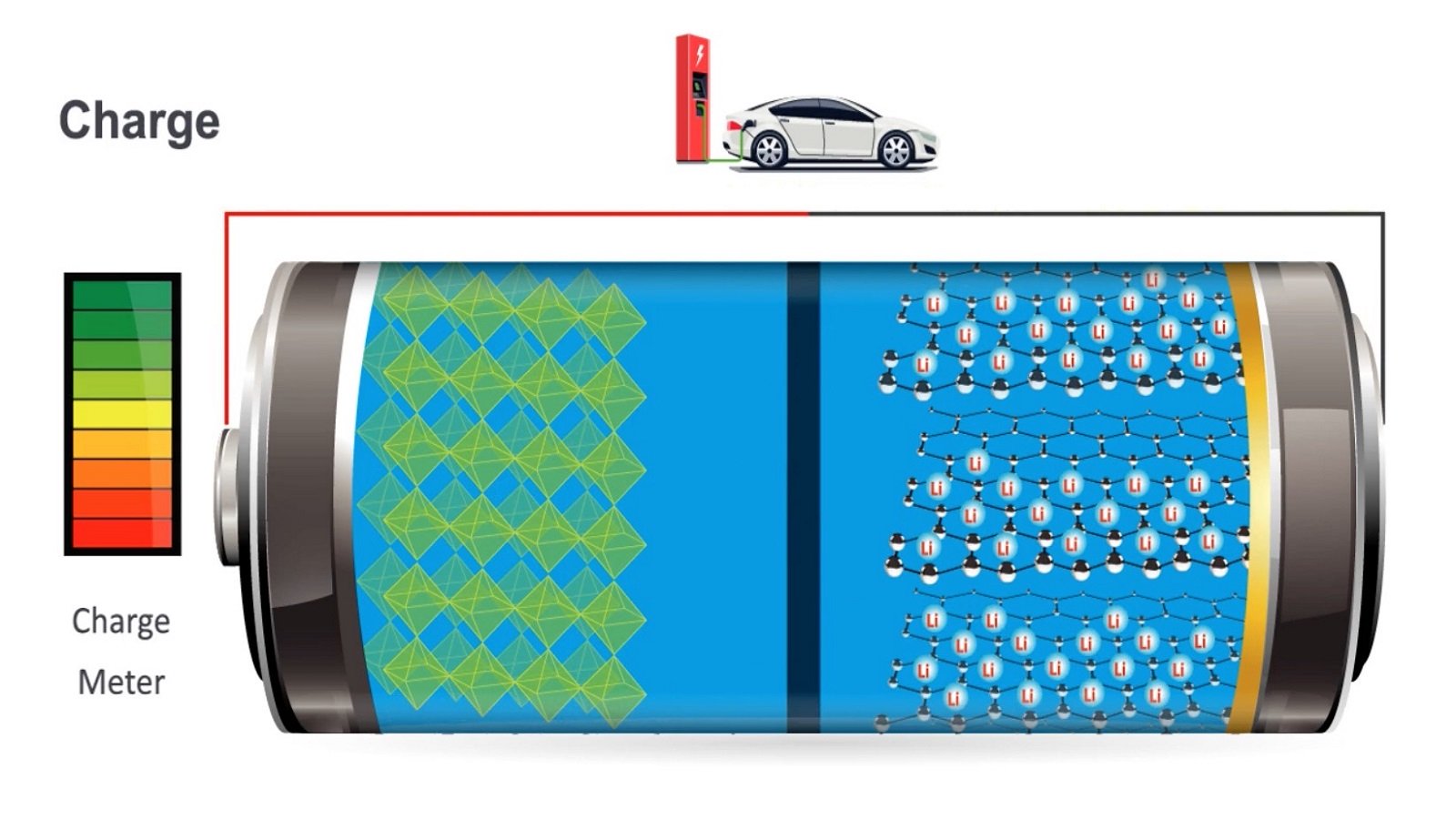
Battery of tests: Scientists figure out how to track what happens inside batteries
The new method could be the key to designing more efficient batteries for specific uses, like electric cars and airplanes.

High-impact research: How meteorite strikes may change quartz on the Earth’s surface
Scientists using a unique combination of capabilities at the Advanced Photon Source have learned more about how meteorites affect one of the most abundant materials in the Earth’s crust.

Argonne team collects Best Paper Award at SC20
The research described in the winning paper is focused on using a high-performance, iterative reconstruction system for noninvasive imaging at synchrotron facilities.
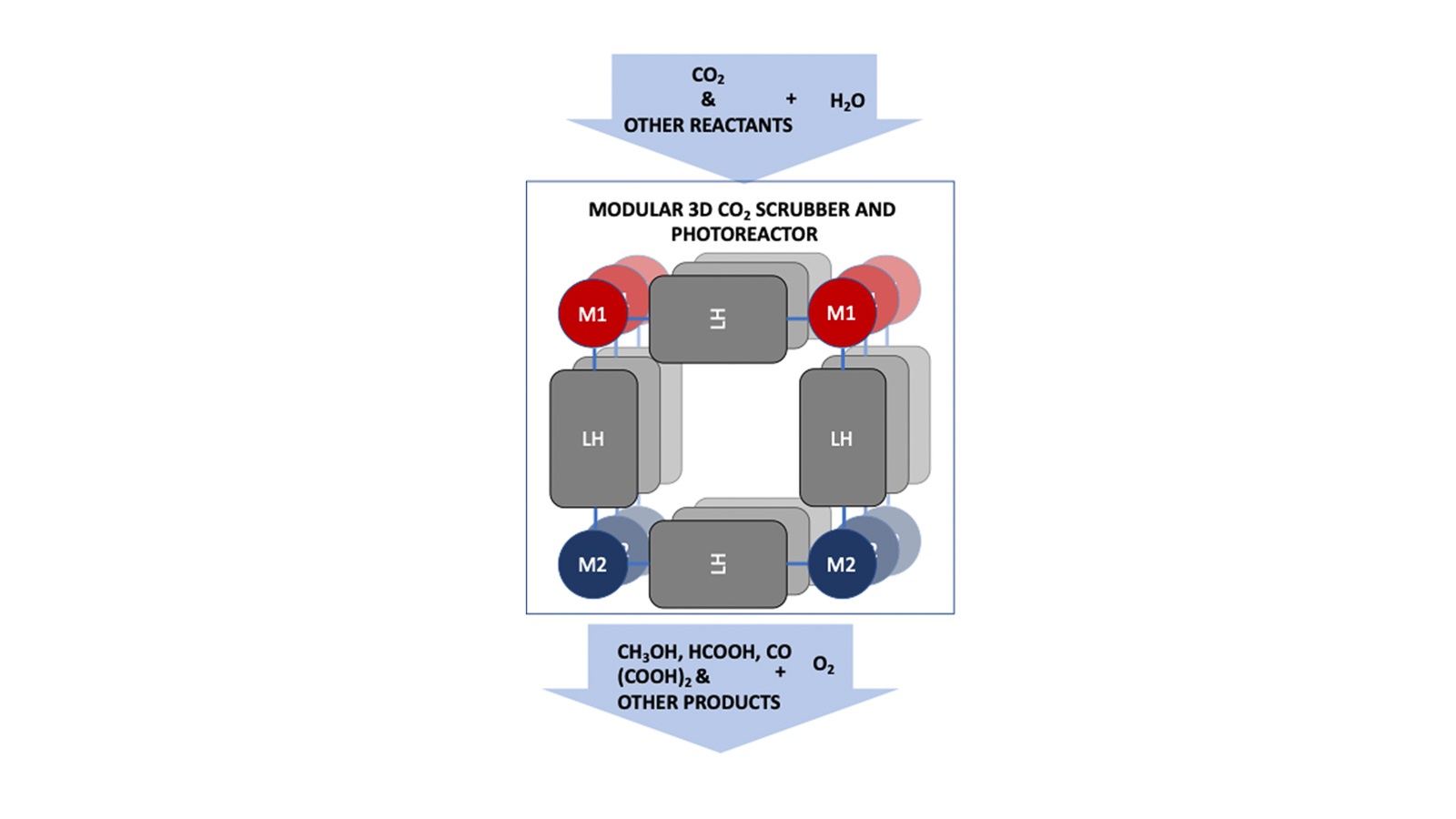
Like a leaf – new ways to capture carbon from the air
Argonne National Laboratory and SLAC National Accelerator Laboratory will receive $4.5 million over three years for research aimed at capturing carbon dioxide directly from air and converting it to useful products by artificial photosynthesis.

How scientists around the country are using the APS to fight COVID-19
Research teams from across the United States are using a multitude of techniques to study the SARS-CoV-2 virus using the Advanced Photon Source from their homes and institutions.
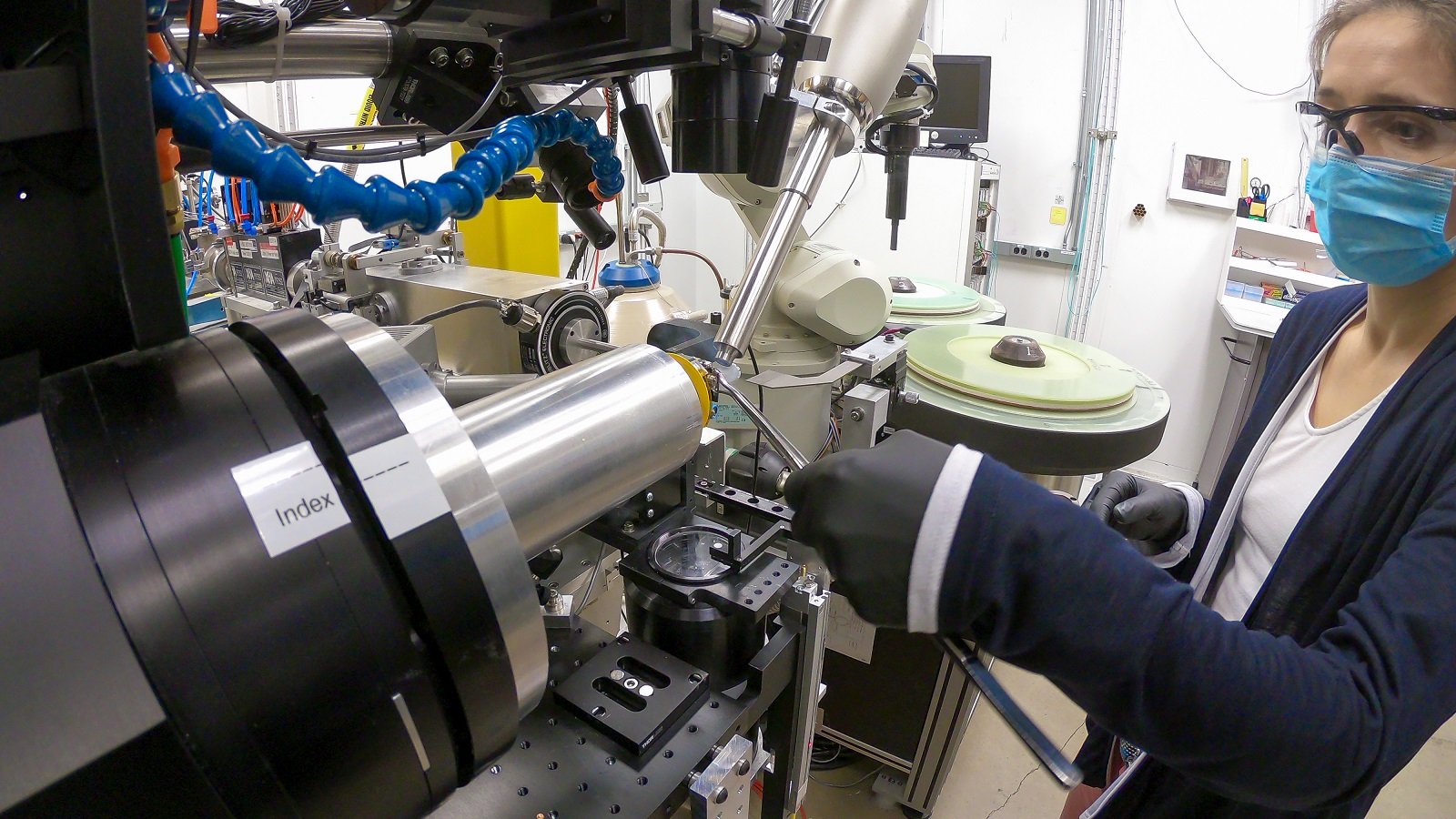
Advanced Photon Source at the heart of COVID-19 research
Argonne scientists, working as part of a national consortium of structural genomics experts, have greatly increased our knowledge of the virus that causes COVID-19.

Argonne’s first 3D look into fuel injector will improve efficiency, reliability
The first visualization of its kind, created by using powerful X-rays at Argonne’s Advanced Photon Source, will lead to improved manufacturing and efficiency.

Hide and seek: Understanding how COVID-19 evades detection in a human cell
Scientists using the Advanced Photon Source have discovered new insights into the ways the SARS-CoV-2 virus camouflages itself inside the human body.